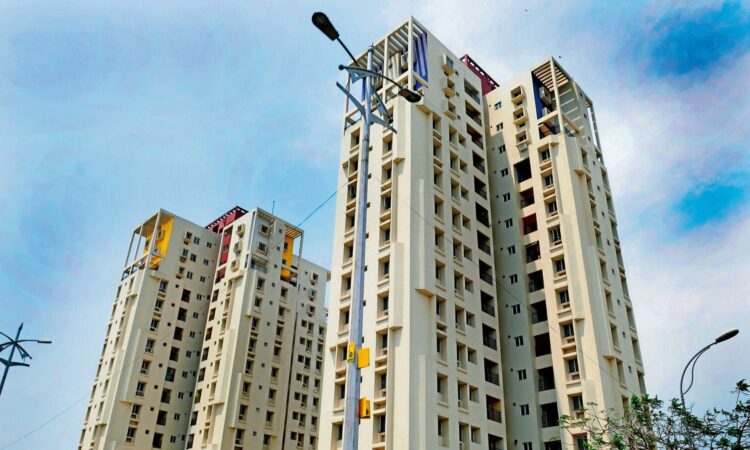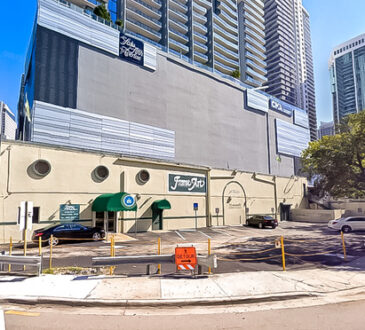
Real estate as an asset class has long been a mainstay for investor portfolios, both small or large. While it has mostly been focused on residential real estate, the turn of the century brought in another sub-asset class in the form of commercial real estate, which became the go-to product for high net-worth individuals (HNIs), since the rental yields were far higher than residential real estate.
However, the large ticket size meant that the asset class was always exclusive to HNIs or institutional investors. Over the last half a decade, with the advent of tech platforms and listing of Real Estate Investment Trusts (REITs), this asset class has become more accessible to the general public due to smaller ticket sizes in which investors can invest. In order to further stimulate the growth of this asset class, SEBI plans to introduce MSM REITs – a new way to invest into commercial real estate.Also Read: MSM REITs: How SEBI’s game-changing move will transform India’s real estate investment landscape
What are REITs and why is there a need for MSM REITs?
In simple terms, REITs own a portfolio of commercial properties and investors can purchase units of REITs to gain exposure to this portfolio. Similar to investing in units of a mutual fund scheme, investors gain exposure to the portfolio of assets the scheme owns. REITs manage those properties and collect rentals from the tenants occupying them, which is further distributed to its investors.
Currently, there are four listed REITs in India, 2 sponsored by top developers namely Embassy REIT and Mindspace REIT and 2 sponsored by investment managers namely Brookfield REIT and Nexus REIT. Each of these 4 REITs have a diversified portfolio of underlying properties across Tier 1 and Tier 2 cities in India.
However, certain investors want to gain exposure to specific assets, where they know the entire characteristics like the property, tenant, lease structure, yield profile etc. This is where MSM REITs will enable investors to make property specific investments. Extending our example of regular REITs being equivalent to owning units of a mutual fund scheme, MSM REITs can be thought of as being equivalent to owning a share of a single company. It would allow investors to create their own customized portfolio based on their own unique requirements, just like investors can create their own portfolio by picking up shares in multiple stocks.Also Read: Are real estate investors keen on fractional real estate? 3 experts share insights
How can one find the right MSM REIT to invest in?
An investor should understand and research extensively the underlying asset held by a MSM REIT. To get an investor started on the research, have listed a few parameters which an investor should look for:
Quality and location: These two are arguably the most important features, which an investor needs to assess before investing as the best quality tenants occupy the best buildings in the best locations. Therefore, it is important to visit the asset physically, which enables the investor to ascertain the asset quality as well as the surrounding micro-market.
Grade A properties are usually located in Central or Secondary Business Districts of the city. They come with quality amenities, impressive lobbies, LEED or IGBC certification, high ceiling heights and are built by Grade A developers. In case an investor is unable to visit physically, the location of the building along with the quality of the developer and tenant (like Fortune 1000 or Indian top 100 companies) can serve as a good proxy to assess the quality and location.
Lease structure: In a typical commercial lease, the tenant has lock-in for only a small duration of the lease (3-5 years), while the landlord is ‘locked-in’ for the entire lease period (5-15 years). During the lock-in period, the party which is ‘locked-in’ can’t terminate the contract. An attractive MSM REIT would be one in which the remaining lock-in period is at least 2-3 years and the remaining lease period is at least 5 years.
Moreover, it is important to also understand who has invested in the fit-outs. One should prefer an asset where the fit-outs are done by the tenant, as that improves the stickiness of the tenant and reduces the chance of vacation by the tenant.
Demand/supply dynamics: A good quality asset with a good tenant, has to be understood along with the expected demand and upcoming supply in the location. When compared to the demand, if a micro-market sees a much larger upcoming supply, it pushes the vacancy higher, which puts a significantly downward pressure on the rentals as it gives the bargaining power to the tenants to renegotiate the rents.
Hence, an investor should look for markets which have a vacancy below 10% and favorable demand and supply characteristics. The vacancy and demand/supply data are published regularly by research teams of large IPCs (International Property Consultants) like JLL, CBRE and Knight Frank which can be a good starting point for research.
Management quality: The performance of a MSM REIT will be heavily influenced by the quality of its management team. Poor decision-making, lack of experience, or ineffective property management can impact returns. Therefore, an investor is advised to invest in a MSM REIT, whose management team has a proven track record in investing and exiting assets.Also Read: Real estate dominates Indian household savings with highest allocation: Report
Is diversification necessary in MSM REITs?
Just like in any other investment, diversification is important in MSM REITs as well. However, the diversification will now be under the control of individual investors. We have suggested a couple of ways in which an investor can diversify:
Based on asset class: As the industry matures, there will be MSM REITs available across multiple asset classes like office, retail, warehousing, industrial, hospitality, etc. An investor should be able to invest in assets across all of these and benefit from the upward movements of any particular asset class in a cycle. For example, we are beginning to see asset class diversification in regular REITs as well – the first three REITs to be listed were office, post which the first retail REIT got listed last year. MSM REIT can also be expected to follow a similar trend.
Based on geography: Another way to diversify would be investing across multiple cities and minimizing the city risk at a portfolio level. In fact, this risk is present in some of the listed REITs as well. For example, embassy REIT has a significant majority of its portfolio in Bangalore. Having this flexibility to diversify, would allow the investor to pick and choose markets with strong fundamentals like low vacancy and consistent rental growth.
What are the risks involved?
Like any other financial investment, the MSM REITs will come along with its own set of risks which an investor must be aware of before investing. Some important ones are listed below:
Tenancy: Given that the MSM REIT will have only a single or maybe a handful of tenants, the risk of the tenant vacating the property will always be there. To mitigate this, we recommend investors to conduct a thorough research about the market, tenant, as well as the lease structure. Diversifying across multiple MSM REITs will reduce this risk over time as it is unlikely that all of the tenants vacate at the same time.
Interest rate: Similar to any yield oriented product, MSM REITs also have an underlying interest rate risk. When interest rates go up, an investor would expect higher yield as safer investments like FDs and government bonds start offering higher returns. This leads to fall in REIT prices as prices move inversely to yields.
Liquidity: As MSM REITs are expected to be listed on stock exchanges, they will be much more liquid as compared to a direct real estate investment. However, in times of market stress, it may be challenging to sell MSM REIT units at a desired price, just like a regular REIT. Investors can mitigate this risk by allocating capital for the long term (over 4-5 years).
MSM REITs vs. Regular REITs
A key point to note is the difference in the ticket size. While regular REITs have a ticket size of only one unit (having unit size of less than Rs. 400), MSM REITs are expected to have a minimum ticket size of Rs. 10 lakhs. This large ticket size is to ensure that investors perform thorough research before investing given the nascent stage of the industry. However, as time progresses, the ticket size restriction may be relaxed, similar to the way minimum ticket size in REITs was reduced to one unit from Rs. 2 lakhs initially.
In conclusion, MSM REITs will present a unique opportunity to invest in rent generating commercial assets. For investors who want to choose the assets and micro-markets they invest in, it will reduce the minimum ticket size. Moreover, for the developers and holders of institutional asset managers, it will allow them to bring those assets to market, which were earlier too small for regular REITs and too big for HNIs, thereby providing further boost to commercial real estate.Kunal Moktan is CEO and Co-founder, Property Share.
Here’s your comprehensive 3-minute summary of all the things Finance Minister Nirmala Sitharaman said in her Budget speech: Click to download!




